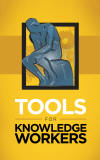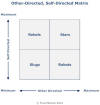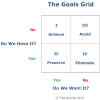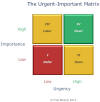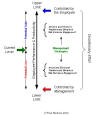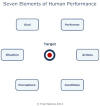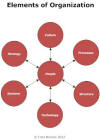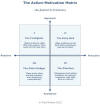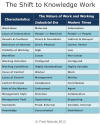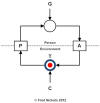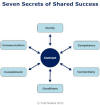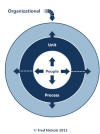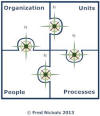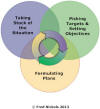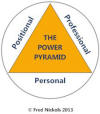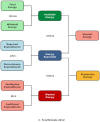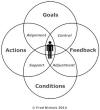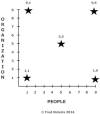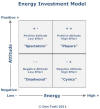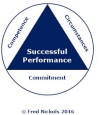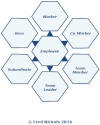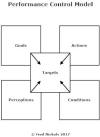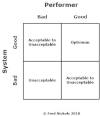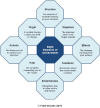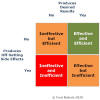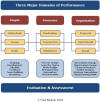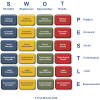
Helping Clients Engineer Solutions to the Problems Confronting Them
Welcome to the Award-Winning Knowledge Workers' Tool Room
"The most important thing for a manager to know about tools is that they are the bridge between work and working."
Peter F. Drucker
|
In 2016, The Knowledge Workers' Tool Room was honored by the
Organization Development Network (ODN) when it received the ODN's
"Share the Wealth" award. That honor is greatly appreciated, especially
since the award honors the memory of Kathie Dannemiller, a notable in
the field of Organization Development (OD). The images below are tools for knowledge workers, especially OD, performance improvement, and management consultants. They are frameworks for thinking about issues, concepts, ideas, problems, solutions and other matters encountered and dealt with in the workplace. They shape thinking and they guide analysis. The tools are primarily visual in nature. Clicking on a thumbnail below reveals a larger image. Clicking on the link below a thumbnail takes you to a one-page description of that tool. Tool descriptions consist of the visual and a modest amount of text. Most one-page tool descriptions contain links to longer pieces for those who want more information. If you have any questions, feel free to use the Questions link below to send them to me. NOTE: All one-page tools are in PDF format. New tools are added from time to time and you will always find them at the bottom of the display. The latest tool added will be the last one displayed. IMPORTANT NOTICE: You are welcome to a single copy of anything on this web site for your personal use. However, none of the material on this site may be reproduced or further distributed or posted elsewhere without the payment of a modest fee. Compensation for materials on this site rests on what I call an "Honor System" and the honor on which it rests is yours. For more, see Honor System. NOTICE: My book, Tools for Knowledge Workers, Vol 1, is now available on Kindle. It is a collection of 12 visual thinking tools along with information explaining each tool and how to use it, including examples, and cases. Chapter 1 presents each tool in a one-page format. Chapters 2-13 discuss uses and applications of each tool. You can access the book on Amazon by clicking on the book's cover image above. |
This page last updated on July 5, 2023
